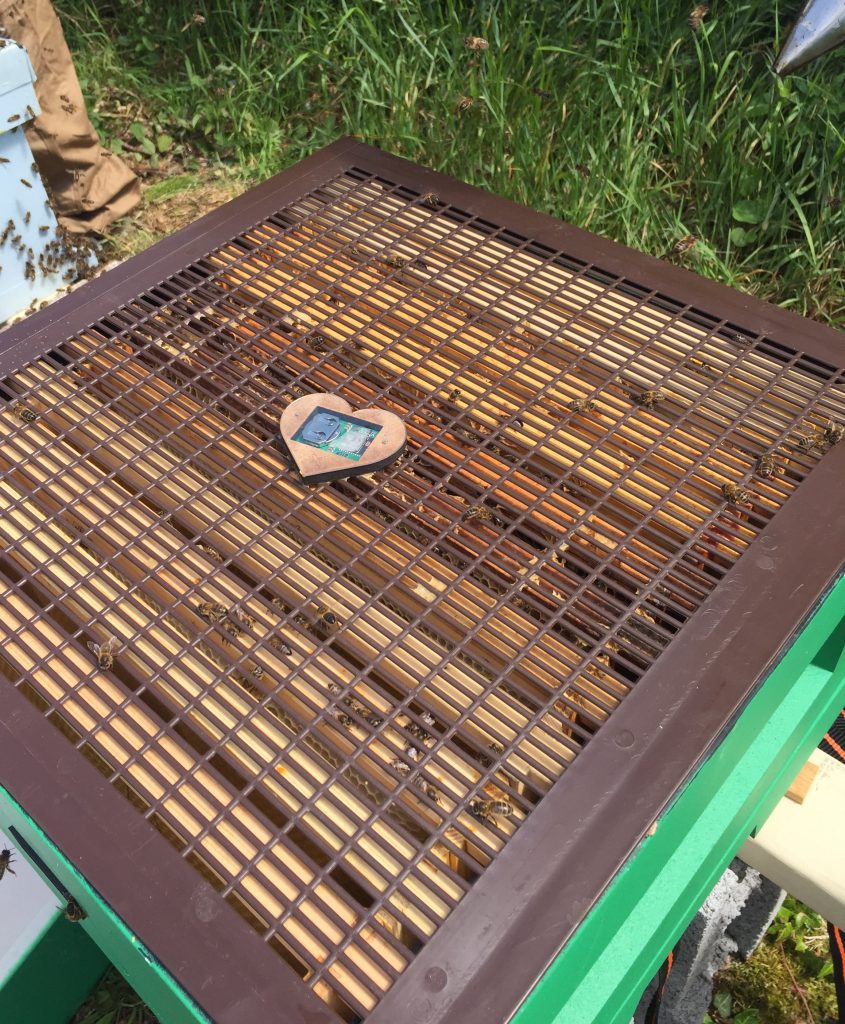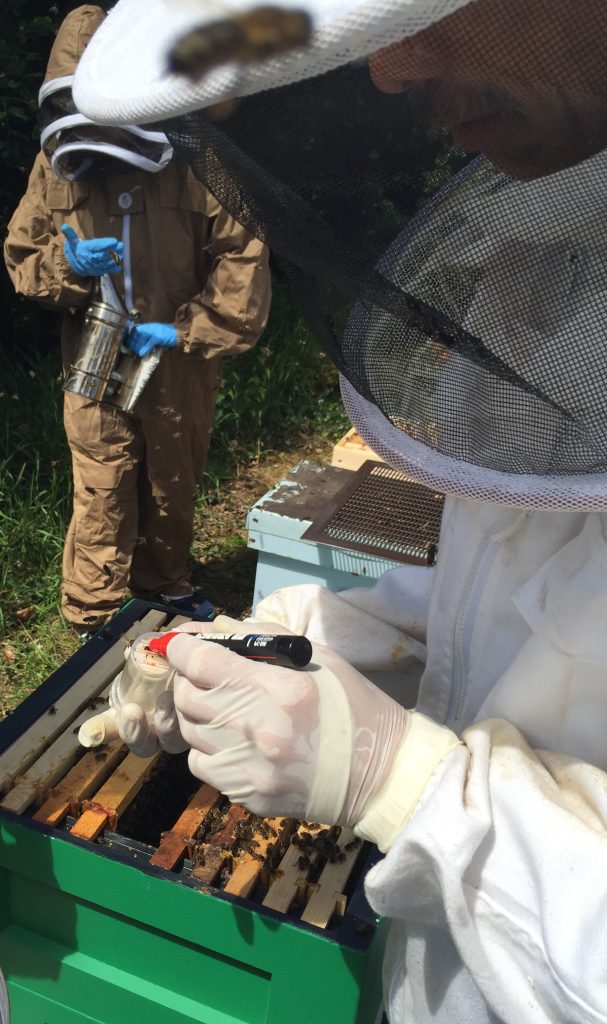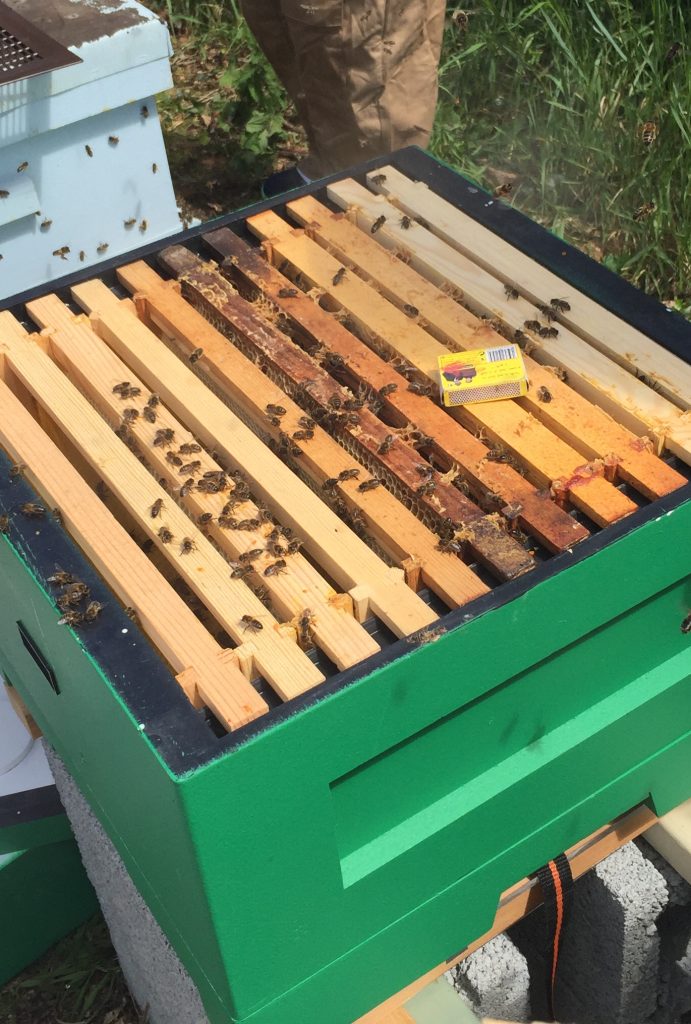Today was warm and a little breezy at the apiary. The Sophia hive was inspected and all appears to be well within. The picture underneath shows the ‘Sensor Heart’ on top of the queen excluder (brown plastic grid). This sits over the brood and monitors the internal temperature of the hive, the humidity and also ‘listens’ to the sound coming from the brood.

Kean was tasked with finding the queen in order to mark her with a red dot (color code for a 2018 Queen). His trained eye quickly spotted her and she was placed in the marking tube where she could be gently immobilized against the grid with soft foam.

Once marked and after clipping her wings, she is placed in a match box to allow time for the ink dot to dry. Kean says this is a precaution to ensure that she is calm and dry when returned to the brood.

It was clear from an inspection of the sections that the Sophia bees have been quite industrious with lots of new comb under construction and active filling of cells.
As it will be a number of weeks before the hive will be opened again, we decided to replace the battery on the hive GSM unit. This is the box which sits on top of the hive and which links via Bluetooth to the sensors on the hive side. It in turn relays the data via the mobile network, 3G/4G, to the beehivemonitoring servers and ultimately to the display app on the viewer’s side. Another suite of sensors are located under the hive with the weighing scales. These monitor the external hive environment, i.e. atmospheric pressure, temperature and humidity as well as the hive weight.
